Content from Material Culture
Last updated on 2024-12-31 | Edit this page
Definition
Material culture constitutes an interdisciplinary domain looking into the connections between individuals and the objects they produce. This field spans the creation, history, preservation, and interpretation of objects, involving the examination of tangible artefacts and their significance. It draws on a spectrum of disciplines, including art history, archaeology, anthropology, ethnography, history, and heritage studies.
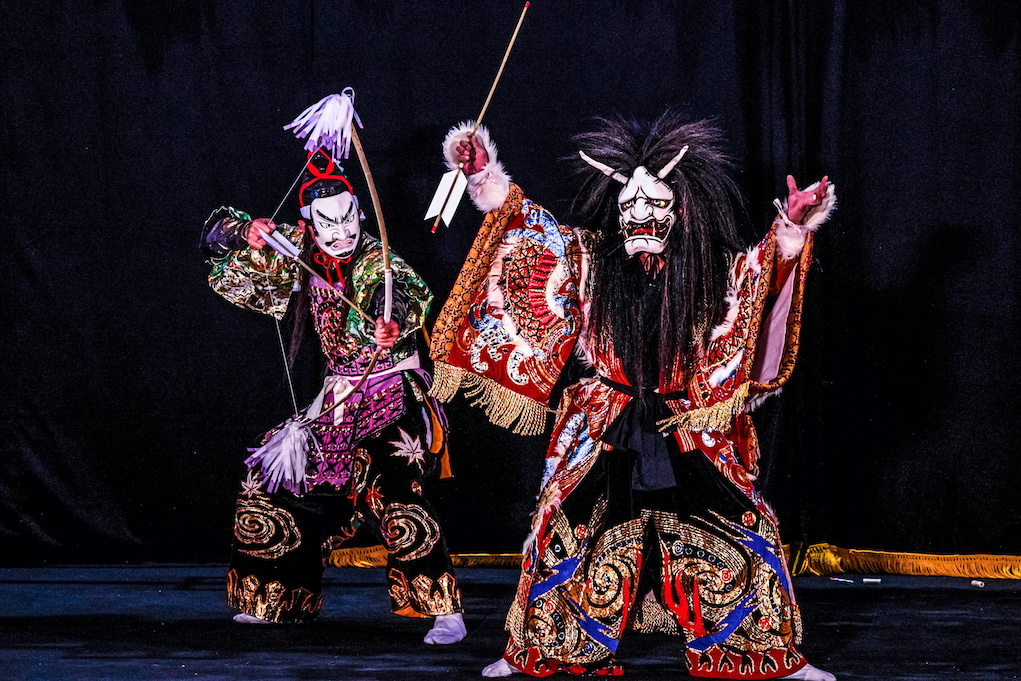
Encompassing a diverse array of tangible objects shaped or altered by human hands, material culture ranges from buildings and architectural elements to textiles, books, decorative objects, instruments, and everyday items. Material culture explores the meaning of artefacts their use, lifespan and associations within various social, historical and political contexts.
Intersection with Cultural Heritage
Material culture is a component of cultural heritage, contributing to the tangible aspects of a group’s legacy.
While not all material culture is part of cultural heritage, the intersection lies in the fact that cultural heritage includes both tangible (material culture) and intangible elements such as knowledge, poems, myths, dance or language. Together, they form the cultural practices and expressions of a particular group.
Material culture study
Examining material culture holds significance as it offers valuable insights into the history, beliefs, and practices of communities and societies. This exploration aids in understanding how individuals shape objects and are influenced by them in several contexts, impacting social relations, work dynamics, and cultural identity. The study of material culture plays a crucial role in heritage preservation and interpretation, stimulates creativity, and acts as a bridge between academic knowledge and public understanding.
Key issues in studying material culture include:
- the challenge of interpreting objects’ meanings
- understanding the contexts in which they were produced and used
- recognising the dynamic nature of their significance over time
- looking at the preservation of objects, including the practices involved in it
- ethical considerations around the objects and their lives
- potential biases introduced by cultural, political, or economic factors.
The contribution of material culture studies is also multifaceted. Its impact is evident in domains such as material citizenship (acknowledging the politics of things); stewardship (caring for culturally significant items); insightful scholarship on the history of object-making and usage; creativity in material culture; and fostering common ground between the public and academia.
Approaches towards material culture
The two main approaches towards objects and material culture, identified by Bernard Herman (1992) are the “object-centred” approach, which focuses on the physical attributes of the object itself, and the “object-driven” approach, which emphasises understanding how objects relate to the cultures and peoples that create and use them. These approaches involve detailed description and contextualisation, respectively.
Object-centred
Focus:
- Object attributes: This approach centres on the physical attributes and characteristics of the object itself.
- Description: It involves a detailed and focused description of the object, including its materials, size, colours, texture, weight, shape, design, style, decorative status, and provenance.
- Creation process: It explores how the object was made, with a focus on the materials and techniques employed.
- Purpose: It seeks to understand the object in terms of its intended purpose and function.
Significance:
- Materiality: Emphasises the material aspects of the object.
- Classification: Aids in categorising objects, identifying artistic styles, and attributing works to specific artists or periods.
Object-driven
Focus:
- Context and meaning: This approach shifts the focus towards understanding how objects relate to the cultures and people that create and use them.
- Contextualisation: Investigates the broader context in which objects are located and used.
- Function and symbolism: Explores the changing meanings of objects within specific social and cultural practices.
- Cultural significance: Considers how objects reflect the values and beliefs of the societies that produced them.
Significance:
- Dynamic nature: Recognises the dynamic nature of the meanings of objects over time and space.
- Cultural insights: Provides insights into societal values, beliefs, and practices.
- Agency: Acknowledges that objects can have an active role in creating meaning rather than being passive.
In summary, the object-centred approach focuses on the materiality and specific attributes of objects, while the object-driven approach emphasises the broader cultural, social, and historical contexts in which these objects exist and gain meaning.
Please note that object-centred and object-driven approaches are not necessarily mutually exclusive, and they can overlap. Object-centred approaches start with a close examination of the object and work outwards, while object-driven approaches start with the broader context and then delve into a greater understanding of the object. Combining both approaches allows for a more comprehensive understanding of material culture, considering both the intrinsic qualities of objects and their dynamic relationships with cultural and social contexts.
Object biographies
Object biographies refer to the conceptualisation of objects having life cycles, from conception and creation to use, appreciation, and eventual termination or afterlife. Like people, objects go through stages, acquiring new identities, meanings, and travels. Object biographies highlight the dynamic and evolving nature of objects within cultural and historical contexts.
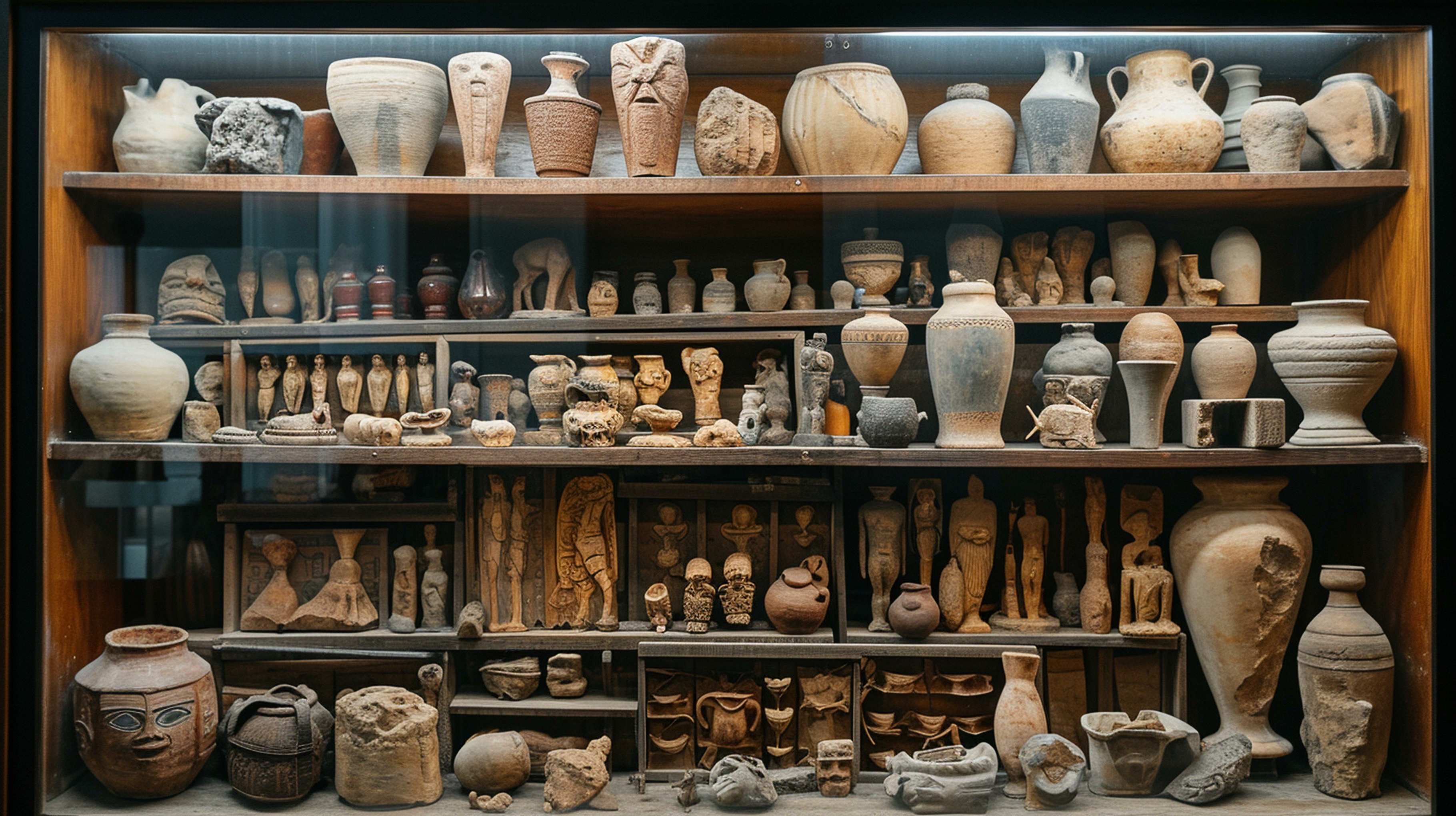
Some key aspects of the objects’ biographies can be found below.
Conception and creation:
- Like birth: Objects are conceived, designed, and created, akin to the birth or initiation phase in a human life.
- Intention and purpose: The process involves the intentions of the creators, the purpose for which the object is made, and the cultural or social context of its creation.
Use, consumption, and appreciation:
- Like life and growth: Objects, like living beings, have a period of use and consumption. They are employed for various purposes, appreciated, and contribute to human activities and experiences.
- Utility and meaning: Objects serve utilitarian functions while also accumulating meanings and associations based on how they are used and valued by individuals or communities.
Disintegration, or afterlife:
- Like death or transformation: At the end of their use or relevance, objects may undergo processes of dissolution, disintegration, or transformation.
- Afterlife in museums: Some objects may find a form of afterlife in museums, where they are preserved, displayed, and continue to contribute to cultural understanding.
Travels and identity:
- Like journeys in life: Objects, like people, can go on journeys. Through travels, they acquire new identities and meanings in different cultural, geographical, or historical contexts.
- Cultural significance: The travels of objects may contribute to their cultural significance and influence their interpretations.
Forces shaping destiny:
- External influences: Throughout their existence, objects are subjected to wider forces in the world that shape their destinies. This includes cultural, social, economic, and political influences.
- Adaptation: Objects, like living organisms, may adapt to changing circumstances and acquire new roles or meanings.
Object biographies and interpretation:
- Understanding change: Object biographies help in understanding how the meanings and uses of objects change over time and in different cultural contexts.
- Cultural dynamics: They highlight the dynamic nature of the relationships between people and objects, as well as the cultural dynamics that influence these relationships.
Essentially, object biographies offer a narrative framework for exploring the life trajectories of objects, providing a dynamic perspective on their existence within human societies. This approach acknowledges the agency of objects and their roles in shaping and reflecting cultural practices, beliefs, and identities.
Challenge
Look at the different aspects of objects’ biographies and think about the objects that you study and document within the context of your research.
What are the key aspects that you focus on and what is something that you would like to further expand on?
Capturing and sharing material culture
Digital documentation enhances our understanding of material knowledge by creating accessible records of objects. Deploying technologies such as digital imaging, 3D scanning, and databases, researchers and practitioners can capture and disseminate details about artefacts, facilitating the study and preservation of material culture. Moreover, digital documentation enables public access and engagement, advancing discussions on diverse interpretations, even those involving contested narratives within cultural heritage.

Media, including textual recordings, imagery, 3D scans and visual reconstructions of the past, contribute to communicating material culture by visually representing objects and conveying knowledge. However, we should always keep in mind that such media essentially constitute subjective means of representation, introducing potential distortions and bias through a process of agency. When looking at media as vehicles of representation, there should be careful consideration of how such media portray objects, events, communities, societies and their identity within specific contexts over time.
Resources and further reading
Augustat, C. (2020). A Play in the Field of Words: From Material Culture to/and Cultural Heritage. INDIANA - Estudios Antropológicos sobre América Latina y el Caribe. Vol. 37 Núm. 2 (2020). Retrieved from: https://doi.org/10.18441/ind.v37i2.237-245
De Cunzo, L. A., & Roeber, C. D. (Eds.). (2022). The Cambridge Handbook of Material Culture Studies. Cambridge: Cambridge University Press.
Herman, B. L. (1992). The Stolen House. Charlottesville and London: The University Press of Virginia.
Papadopoulos, C. (2020). Course: Unit 1: An introduction to 3D heritage. dariahTeach: Open Educational Resources for the Digital Arts and Humanities. Retrieved from: https://teach.dariah.eu/course/view.php?id=55§ion=1
The Open University. (2014). An introduction to material culture. The open university. Retrieved from: https://www.open.edu/openlearn/history-the-arts/visual-art/an-introduction-material-culture/content-section-0?active-tab=content-tab
Tilley, C. (2012). Handbook of material culture. Sage Publications.
Content from Types of Media
Last updated on 2024-12-31 | Edit this page
Multidimensional media is a term which covers various types of non-textual data. It is often used to refer to representational and derivative media created through digitisation processes or synthetic images produced via software. These processes often result in multi-part, multi-format and, often, large project files which describe the creation process.
We refer to media as multidimensional. This is because data experts structure information according to the dimensions used to store the data in the computer system.
For example, the name of one of your friends can be stored in a data type with 1-dimension:
John SmithMeanwhile, a table which stores the name of all your friends and their addresses will use a data type similar to a spreadsheet table.
| Name | Address |
|-----------------|-----------------|
| John Smith | 34 Street Rd |
| Marion Lopes | 105 Babel St |
The latter uses 2-dimensions as both rows and columns are used to organised the data.
Digital Images
Data in digital images is organised similar to tables, as pixels or picture elements, which are the smallest element of an image, are organised across 2-dimensions. We usually refer to these dimensions as the x, y axis.

The image resolution usually refers to how many pixels an image has, either as a total or its width. This is why resolution is usually given in 2-dimensions, for example an image with a resolution of 800 × 600 pixels will have 800 pixels across the x-axis (its width), and 600 pixels across the y-axis (its height). The image will contain 480,000 pixels in total.

Meanwhile, the PPI or DPI (Pixels per Inch or Dots Per Inch) attributes of images refer to their pixel density. That is how many pixels there are in 1 inch (2.54 cm) in the display in which the image is rendered or in the printed image.

Example of digital images include digital photographs generated by a camera sensor (e.g. on a smart phone), or synthetic images created on directly on the computer (e.g. painting tools or generated by Artificial Intelligence software).


Given the wide-availability of camera sensors, including on smart phones and digital cameras, digital images are the widest available multidimensional media.
Image Platforms
Collections of images are found across many websites, and popular search engines now support image-based search which allows to search digital-images across websites giving an input image. See examples:
Challenge: Search for images
Save the image below and navigate in your browser to https://www.google.com/. Using the camera image on the search bar, search for the image.
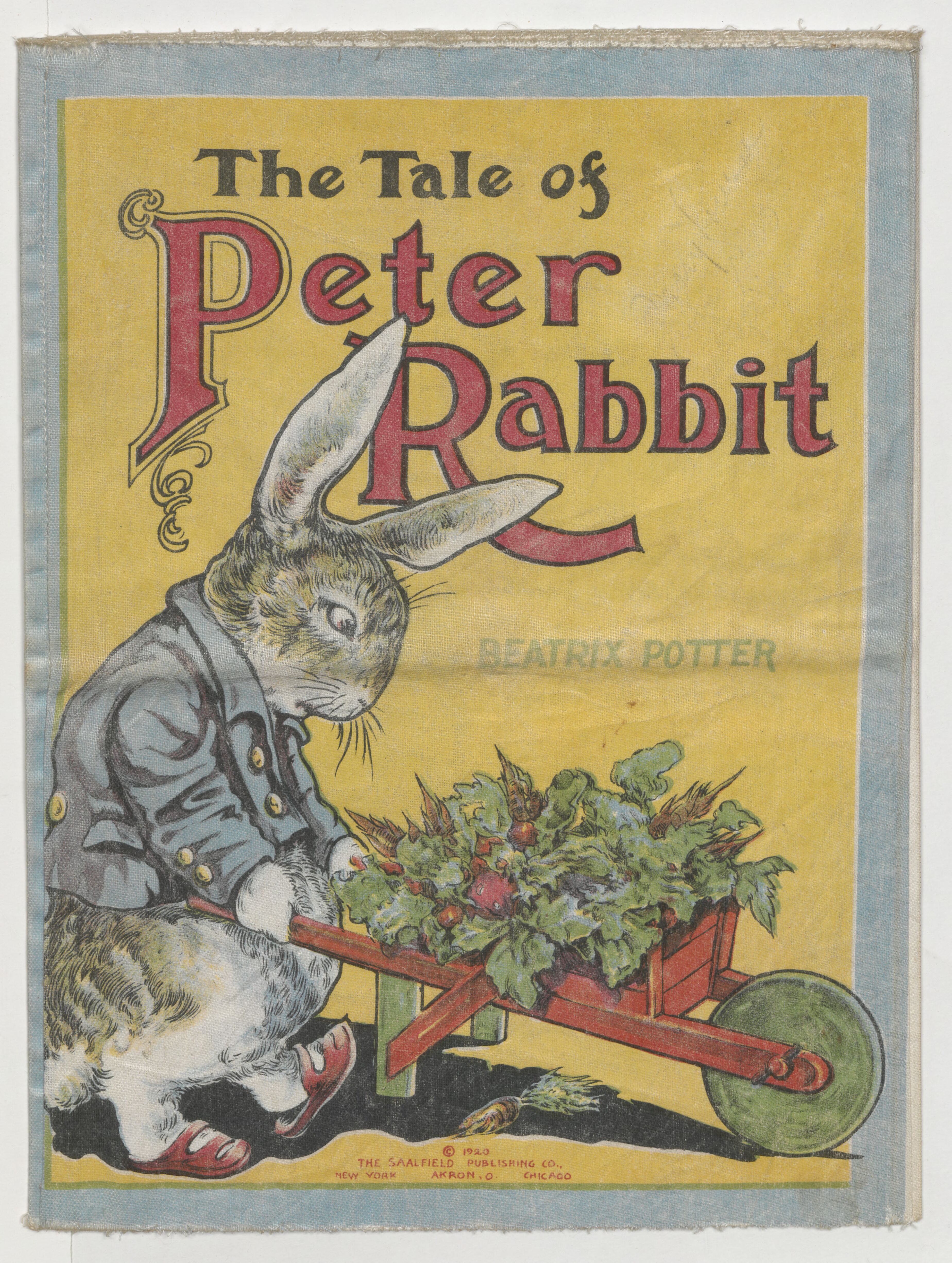
Image Formats
Finally, images are commonly stored using formats such such as:
- JPEG, short for Joint Photographic Experts Group, and PNG, short for Portable Network Graphics formats compress pixel information making the files size smaller.
- TIFF, short for Tag Image File Format, stores non-compressed information, making the file size larger.
Digital photography will make use of other formats, such as DNG or RAW to store raw image information. Other software store image projects in proprietary formats, meaning files can only be open by these.
Digital Video
Digital video could be considered a 2-dimensional or, even a 3-dimensional, type of media.
This is because a video contains many images or frames, which are stored in 2-dimensions as described above, and rendered sequentially.


Videos also have a Resolution which is related to the images. The resolution will be the same for all the frames in a video file. For instance, a 4K video is usually made of frames which are X x Y in resolution.
The rate at which frames are displayed is usually referred to as Frames Per Second or FPS. For reference, TV and movies are usually displayed at 24 FPS.
Video Platforms
Video is also a popular type of content, as there are many other platforms on the web which allow users to easily share their media. See examples:
Note that while images can be downloaded by web browsers, it is not always possible to download video from these websites. Many times, video is only made available through a media player.
Video Formats
There are many formats to store video and audio, including those supported by webpages:
- MP4 (MPEG-4) is a common container format which can play in almost all devices and over the web.
- WebM and OGG are open video formats.
There are many others formats.
Note that videos with higher resolution and FPS will be larger and hence, challenging to send via email or download over the web.
3D Images or Models
A 3D model is a 3-dimensional type of media. It describes 3D shapes along with other information related to their appearance, e.g. colour information.
To understand how 3D models are described and displayed in the computer, we need to understand two concepts: vector and raster data.
There are resources here to learn more about processes for 3D model production:
- CARARE Introduction to the 3D workflow
- Photogrammetry
- Basic principles and tips for 3D digitisation of cultural heritage
Vector Data
Regardless of the process, the output of these processes, in most cases will produce a 3D model file which contains vector data.
These data include:
- Points or vertices described in a 3D space.
- Information on how the points are connected to form shapes such as triangles, which is known as the topology or connectivity of the 3D model.
- Colour or texture (image) information which describe its appearance.
Raster Data
Rasterisation is the process to go from a vector description into a raster image.
The raster image is the pixel-based representation of the vector description.

3D models are rendered as raster images on the screen, smartphone or any other display device (e.g. a Virtual Reality headset). The computer will have to compute this raster image in real-time, which is why 3D models which contain many vertices can be slow to render.
Examples of 3D models
We tend to use 3D model to refer to many types of spatial data.
For example, see below an example of a 3D model of an architectural space.
This is a 3D model of an individual object.
© Trozzella (Messapian pottery) from VisualMedia Service
In many cases, the 3D data can be mostly points in 3D space as shown below.
Spatial data can also be recorded with an additional parameter - time.
For instance, motion capture devices will generate vector data which changes many times within a second. We call this measure sampling rate per second.
Motion Capture Dataset © Antonio d’Angelo / Effigy, 3D animated model from Sketchfab
3D Model Platforms
Popular format platforms include:
As with video, the viewers for 3D models normally allow to visualise and interact with the information. But these viewers do not always allow to download the model that is viewed.
3D Model Formats
There are many file formats for 3D images or models including:
- GLTF (JSON/ASCII) or GLB (binary) is the standard Graphics Library Transmission Format which is commonly used for 3D models on the web.
- OBJ, USD and PLY are popular format for 3D data which support additional information, such as textures or colour.
- STL is a popular format in 3D printing and rapid prototyping.
Other proprietary formats such as FBX and 3DS will contain vector information on scenes.
The number of points/vertices or triangles are used to determine the resolution of the 3D model. Note that, as with images and video, 3D models that have a larger number of vertices, for example, over 100,000 will have a larger size. This has an impact on how long it takes to download, load or render this content.
Gathering Multidimensional Files
Great variety of multidimensional content is available through the various platforms for research, education, entertainment and storytelling among other applications.
Some aggregation websites offer access to a variety of visual content, including:
Other discipline specific or museum sites include:
- Journal of Digital History Journal
- Brighton and Hove Museums
- Victoria and Albert Museum
- Science Group Museum
Some general advice when looking for content for your projects includes:
- Download the multimedia file where possible and store locally or on the repository where you are curating the data set.
- Use the maximum resolution possible. It is always possible to reduce the number of pixels, but not to increase them.
- Record basic metadata about the file, including the reference and copyright to the image.
If you are doing additional research look at data models, such as the Dublin-CORE cross domain set, which contains useful information to store, including:
- Title
- Subject
- Description
- Date
- Resource Type
- Format
- Resource Identifier
- Language
- Rights Management
- Remember to use a suitable file name to keep easy track of the media and its provenance. If the file it is too large, it is possible to resize and save again in medium and low quality.
For example:
WebsiteFromWhereFileWasDownloaded_ResourceID_[high|medium|low].[format] This will become:
Flick_photo1234_high.png
Flick_photo1234_medium.png
Flick_photo1234_low.pngControlled vocabularies
To facilitate the quality of documentation, findability, access and long-term preservation of data, controlled vocabularies can be also used to help with adding the above-mentioned and further data. Essentially, controlled vocabularies, with their standardised terms and language, describe artefacts, objects, or concepts within a specific domain and help organise and communicate information in databases and information systems.
Some of the most well-known and used vocabularies in the cultural heritage domain are:
- The Getty Art & Architecture Thesaurus (AAT)
- The Getty Thesaurus of Geographic Names (TGN)
- The Union List of Artist Names (ULAN)
- The Cultural Objects Name Authority (CONA) (in progress)
- The Library of Congress Subject Headings (LCSH)
- PeriodO - A gazetteer of periods for linking and visualizing data
More vocabularies in the heritage domain exist and serve different purposes. Some further examples from Historic England, Historic Environment Scotland and the Royal Commission on Ancient & Historical Monuments of Wales (RCAHMW) can be found here.
Tools to map vocabularies also exist, such as the Vocabulary Matching Tool by the University of South Wales and the Vocabulary Matching Tool by the EU Horizon 2020-funded AriadnePlus project.
The organisation of terms within controlled vocabularies typically adheres to a taxonomy. Taxonomies categorise or classify vocabularies usually in a hierarchical way. An interesting taxonomy in the field of Digital Humanities is the TaDiRAH Taxonomy of Digital Research Activities in the Humanities.
More information about controlled vocabularies can be found in the following resources:
Europeana (2021). Webinar: Using Vocabularies and Linked data: #Connecting Archaeology. Retrieved from: https://pro.europeana.eu/event/using-vocabularies-and-linked-data-connecting-archaeology
Getty Center. Vocabularies for Cultural Heritage Objects. Retrieved from: https://www.getty.edu/research/publications/electronic_publications/intro_controlled_vocab/cultural_objects.pdf
Harpring, P. (2023). Getty Vocabularies and Linked Oped Data (LOD). Retrieved from: https://www.getty.edu/research/tools/vocabularies/Linked_Data_Getty_Vocabularies.pdf
Key Points
Digital Images are organized using pixels, the smallest elements of an image, which are arranged across 2 dimensions (x and y axis).
Image resolution refers to the number of pixels, and it is usually given in 2 dimensions (e.g., 800 × 600 pixels).
Digital Video is a 2-dimensional or even 3-dimensional type of media.
Videos consist of multiple frames stored in 2 dimensions (like images).
Videos also have a resolution and frame rate (Frames Per Second).
3D Images or Models are files containing vector data describing spatial information.
Rasterization is the process of converting vector graphics into raster images.
Various aspects need to be considered when collecting, storing, and managing multimedia files effectively.
Recording metadata and using appropriate file naming conventions is important.
Content from 3D Digitisation methods
Last updated on 2024-12-31 | Edit this page
Context
3D digitisation has a rich history dating back to the 1960s, originating from the pioneering work at MIT in computer-aided design. However, over the past few decades, it has progressively evolved into a widespread practice, driven by improved accessibility and affordability of hardware and software systems used for acquiring, processing, and visualising 3D data.
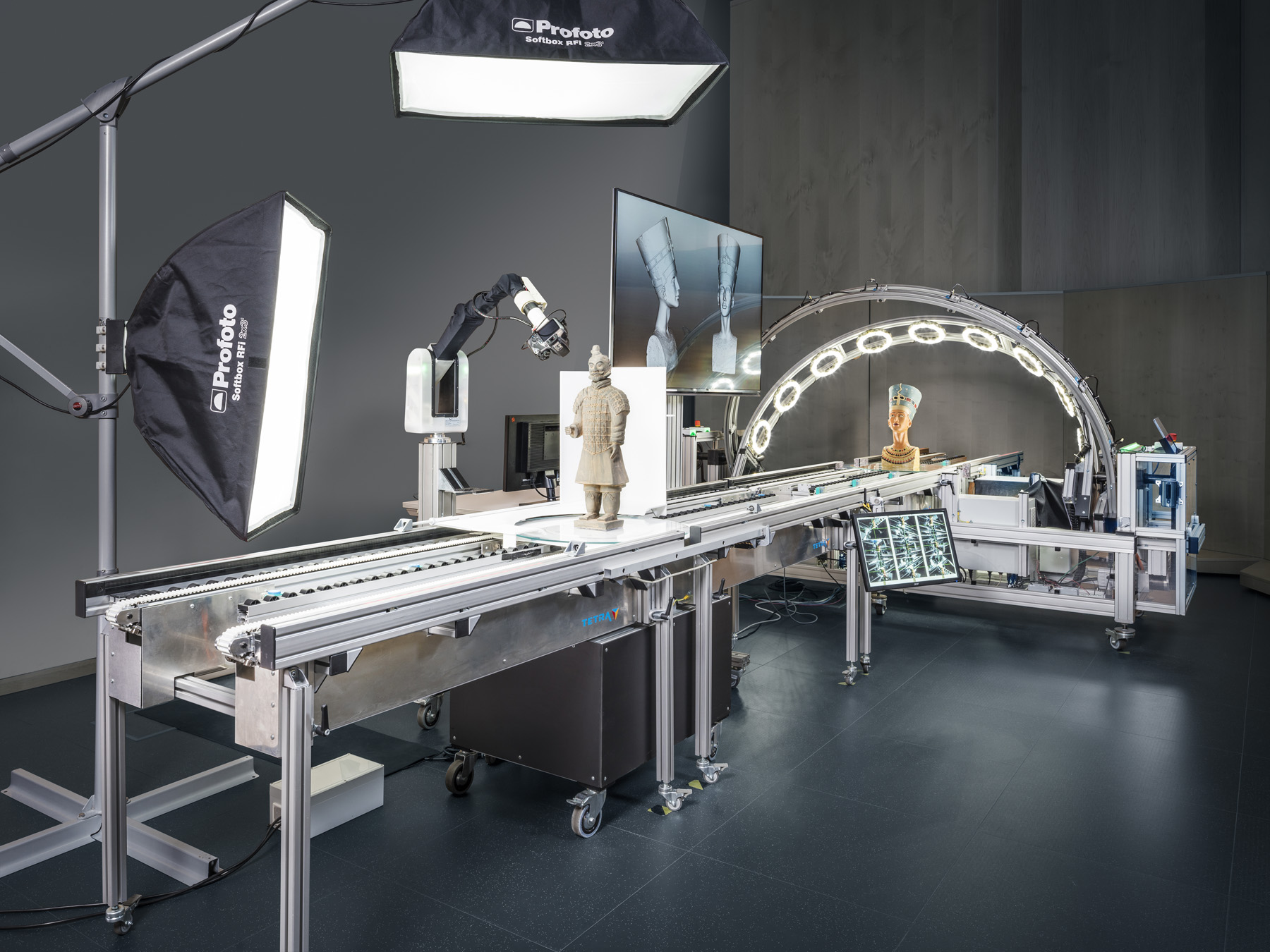
Like with many technologies, the heritage domain has served as a valuable testing ground for exploring different equipment, workflows, and methods to visualise and interact with digital heritage assets.
The primary advantage of 3D digitised assets lies in the inherent nature of their multidimensional data, which can be easily manipulated for detailed study or to highlight specific attributes, exchanged via the web, and experienced by the public through a diverse range of online and offline applications.
Over the past few years, major institutions like the Smithsonian, the British Museum, the Science Museum have promoted 3D digitisation initiatives for their collections and have also made collections of 3D objects accessible online.
Given the gradual democratisation of 3D technologies, it can be argued that 3D digitisation has become crucial for various aspects of cultural heritage management.
It enables conservation and restoration efforts, facilitates the study and exchange of knowledge among researchers and communities, reconstructs damaged or lost assets and sites, and provides access to remote or inaccessible objects and locations.
Additionally, it allows individuals, including those with impairments, to experience artefacts, monuments, and sites.

To choose the right method to digitise in 3D a collection of artefacts, a monument or site, several decisions need to be taken concerning the:
- Aim of the project
- Scope of the project (e.g., collection to digitise and type/size/condition/location of assets)
- Audience of the project
- Cost of digitisation
- Resources (hardware, software, staff time)
- Knowledge and skills
- Purpose of digitisation
All these, as well as issues around data sovereignty, Intellectual Property Rights (IPR) and ethics will define the quality, reach and potential impact of the project.
Planning for 3D digitisation
When setting up a digitisation project, it is imperative to have a careful plan in mind about the purpose, the resources and the processes of the project.
A data management plan is also necessary to as part of such preparation. The National Heritage Lottery Fund (2023) has recently produced a Digitisation Project Planner to help with such preparation.
Currently, there are no internationally recognised standards for planning, organising, setting up, and implementing a 3D data acquisition project. Furthermore, there is no widely accepted standard for specifying the level of detail and accuracy required for 3D digitisation.
Additionally, there are no standard guidelines regarding the quantity and quality of data for acquisition and delivery. Consequently, there is a clear need for standardisation to ensure the sustainability and long-term preservation of 3D data, including facilitating access, and interaction with data.
Challenge: Digitisation Planner
Access and download the Digitisation Planner from the National Heritage Lottery Fund website.
Go through the sections of the planner (sheet 1 and 2) and try to respond to the proposed questions.
Are there any sections or questions where you need to put more effort into responding to within the context of your project?
Try to articulate and write down some responses to these questions.
Methods
There are many methods to capture or construct 3D data and there is always research and efforts to combine methods and experiment with new acquisition types and combinations of data. Here we present the most widespread methods in the field of 3D digitisation.
Photogrammetry
Photogrammetry is the ‘art, science, and technology of obtaining reliable information about physical objects and the environment through processes of recording, measuring and interpreting photographic images’ (American Society for Photogrammetry and Remote Sensing).
Photogrammetry is one of the most popular methods to acquire information about the shape and appearance of cultural heritage assets, as it is cost-effective and essentially involves capturing 2D images with a camera and then using appropriate software to construct a 3D model.
This happens sequentially as the photogrammetric software will first detect features on the images, then proceed with feature matching and lastly, it will reconstruct the 3D asset with or without colour.
DSLR cameras, digital compact cameras and even mobile phones can be used for photogrammetry, but the result of such acquisition will largely depend on the conditions and quality of the acquired images.
Photogrammetry can be used for different heritage objects, ranging from small movable artefacts to large immovable assets or sites. Aerial photogrammetry is used to acquire images from the air using an aircraft or drone (UAV - Unmanned Aerial Vehicle) and combining them with georeferencing data. Terrestrial photogrammetry is used to acquire images from the ground or near the ground with cameras. Close-range photogrammetry is a branch of terrestrial photogrammetry and refers to the acquisition of photographs from a shorter distance with regards to the object that we want to capture.
Laser scanning
Laser scanning refers to all the techniques which deploy a laser to calculate shape, i.e., the distance between an object and the point from where the laser is emitted. Laser scanning can also acquire colour information if it is equipped with sensors to get such data. When deploying laser scanning, a set of points or point-cloud is acquired. Each point will have x, y, z coordinates.
The main types of laser scanning are:
Time of flight (TOF)
This is used for terrestrial laser scanning capturing archaeological or excavation sites, as well as larger architectural monuments. These scanners essentially measure the time it takes for a laser pulse emitted from the scanner to reach a given surface and then return. The accuracy of these scanners depends on the accuracy of their timer when calculating the returning signal.
TOF systems can also acquire colour through internal or external cameras attached to the scanner. Usually, TOF systems are deployed for acquisition up to 300 meters away but might have lower acquisition rates and accuracy.
Structured light scanners
These are scanners which emit patterns of light, such as stripes, parallel lines and QR-code-like light onto the surface of an object. Such scanners measure the distance from the scanner to the surface of the scanned object by monitoring the distortions of the projected pattern using triangulation.
Structured light scanners, depending on the type of light pattern they emit, can be divided into phase shift, random speckle and multi-line scanners. The most popular structured light scanners are the phase shift scanners, and these are used to acquire objects at approximately 80 meters away (or more depending on the scanner).
Random speckle and multi-line scanners are mostly used to acquire assets with handheld scanners at short distances. Structured light scanners are faster than TOF scanners.

Triangulation
These scanners work for a shorter-range acquisition, usually up to 2 meters away, and are equipped with a laser source and a camera. Such scanners use a spot, line or pattern laser beam which is emitted onto an object and the deformation of such line or pattern is measured by a camera using the triangulation principle to calculate depth. Triangulation scanners can be very ‘accurate’ and can also capture colour depending on the options offered by each model.
Airborne laser scanning or LiDAR (light detection and ranging)
These are scanners used on aircrafts to acquire 3D information about the earth’s surface and ‘reveal’ features in the landscape, such as surface structures, which can be visible as marks on the ground. LiDAR scanners emit pulses which are reflected when they reach the ground.
The time needed for the laser light to return to the aircraft along with the information from GPS enables to construct detailed and ‘accurate’ maps of the surface of the ground. The advantage of the LiDAR systems is that they can filter signals and choose the ones which will reach the ground instead of the ones which are reflected by woodland and plants.
In such a way, ‘hidden’ constructions can become visible in places where access and surveys are difficult to happen. Historic England has several examples of the deployment of such scanning technology on their website along with examples of LiDAR mapping.
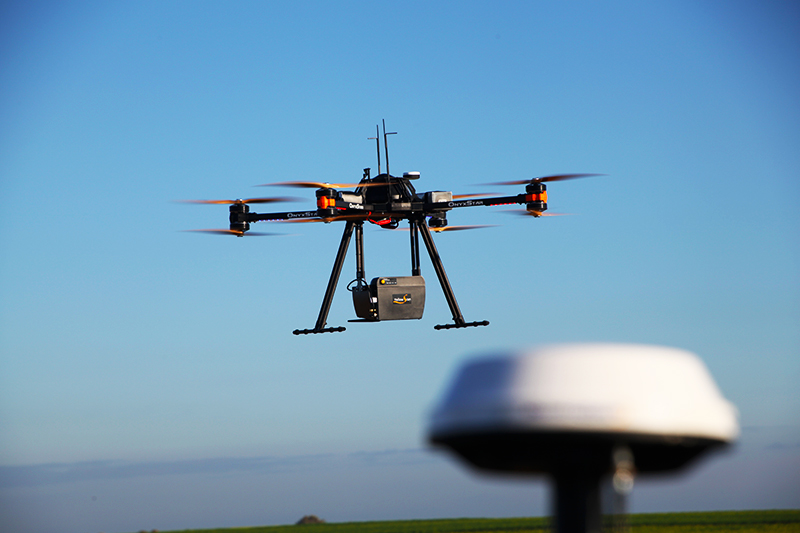
Computed Tomography (CT)
This method comes from the discipline of medicine and is a powerful non-invasive tool to capture information about the interior of an object. The way that CT works is by taking sequences of X-rays at 360 degrees around the object. The acquired ‘2D slices’ are then computed to generate volumetric data.
CT is less accessible for heritage digitisation, due to the high cost of such equipment, and hence it often requires transferring artefacts to medical facilities. In the heritage domain, computed tomography has been used widely to document and study mummies (mostly Egyptian) without having to unwrap them.
Yet, the deployment of the technology to document mummified bodies has received criticism from several scholars as well as part of the public. Further information on this topic can be found in the case study Disturbing the Dead of the #dariahTeach website.
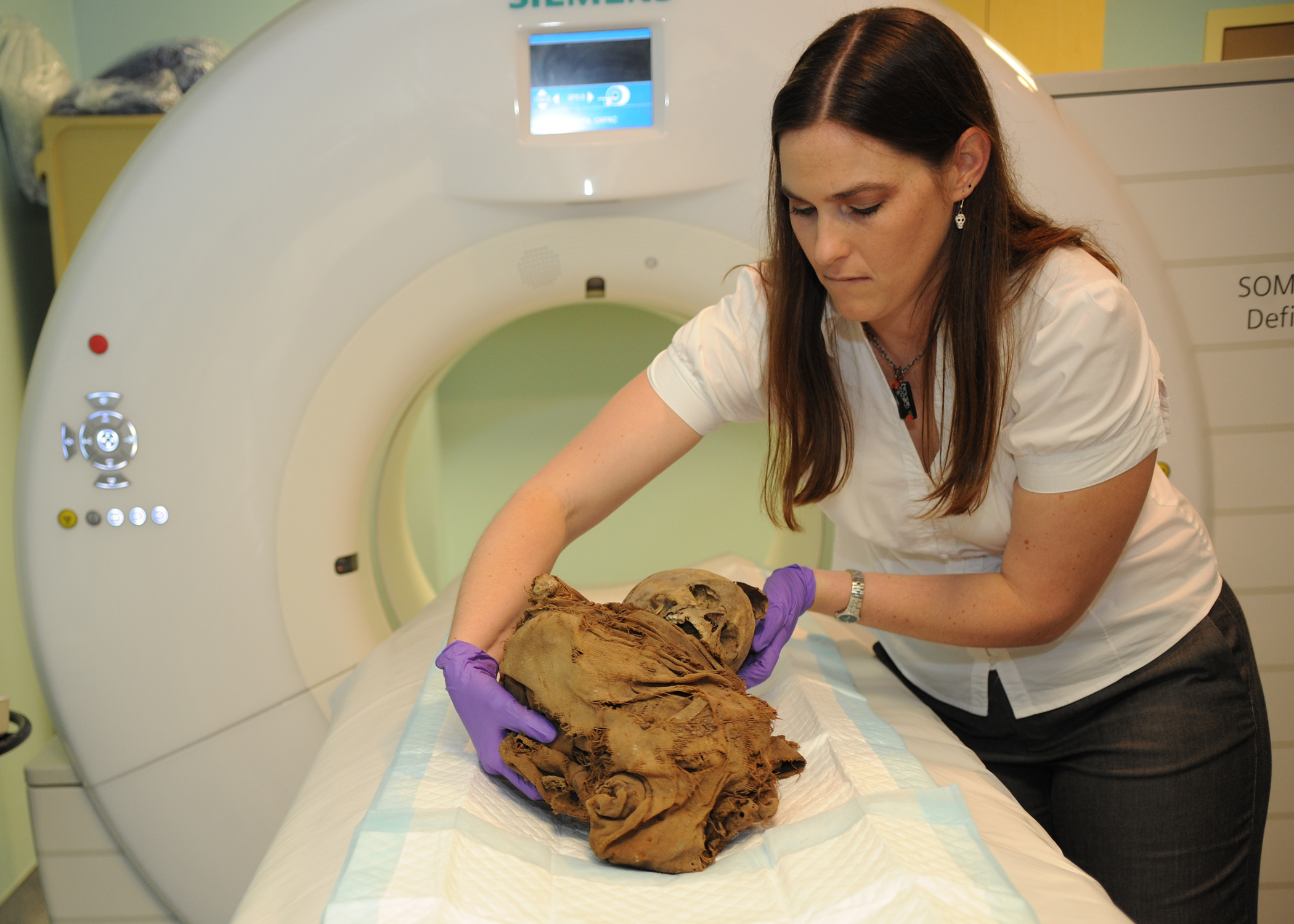
Reflectance Transformation Imaging (RTI)
Reflectance transformation Imaging refers to the method of capturing surface and colour for objects which are relatively flat but have a certain ‘implicit geometry’. These can be anything from engraved tablets and carved objects to paintings, coins and inscriptions.
RTI was developed in the HP Labs in 2001 and constitutes a method which mathematically enhances the surface shape and colour of an object by calculating and visualising the direction of the light which was used when acquiring images with a camera. RTI is not a 3D digitisation method, and it could be better described as a qualitative 2.5D digitisation technique to document material culture.
The most popular RTI method is Highlight RTI which can be done by using a camera on a tripod, a source of light and other easily found equipment (ball, measuring tape, backdrop fabric etc). Another method is the Dome RTI. This needs a dome with attached lights on it and a camera placed on top to acquire a series of images while dedicated software controls the lights on the dome. In both cases, the acquired data are processed with dedicated software to produce a relightable image of the object from any direction, enabling improved viewing, studying and enjoyment.


Content from Resources and Further Reading
Last updated on 2024-12-31 | Edit this page
Archaeology Data Service. Guides to good practice: 3D models. Retrieved from: https://archaeologydataservice.ac.uk/help-guidance/guides-to-good-practice/data-analysis-and-visualisation/3d-models/aims-and-objectives/3d-models-in-archaeology/
Barreau, J.-B., Leroy Du Cardonnoy, E., Laroche, F., Madeleine, S., Mathieu, V., Granier, X., Mora, P., Pouyet, T., & Chayani, M. (2021, April 1). Specification Writing Guide : How To Manage a Project in 3D for Cultural Heritage. HAL Archives Ouvertes. https://hal.science/hal-03193142
Cultural Heritage Imaging. Overview of CHI technologies. Retrieved from: https://culturalheritageimaging.org/Technologies/Overview/
Digital Preservation Coalition and Artefactual Systems (2021). Preserving 3D Data Types Series. http://doi.org/10.7207/twgn21-14
European Commission- Expert Group on Digital Cultural Heritage and Europeana (2020). Basic principles and tips for 3D digitisation of cultural heritage. Retrieved from: https://digital-strategy.ec.europa.eu/en/library/basic-principles-and-tips-3d-digitisation-cultural-heritage
Gibson A. P. (2023). Medical imaging applied to heritage. The British journal of radiology, 96(1152), 20230611. https://doi.org/10.1259/bjr.20230611
Moore, J., Rountrey, A., & Hannah Scates Kettler. (2022). 3D Data Creation to Curation: Community Standards for 3D Data Preservation. Assoc. of College & Research Libraries.
Papadopoulos, C. (2020). Course: Remaking Material Culture in 3D. dariahTeach: Open Educational Resources for the Digital Arts and Humanities. Retrieved from: https://teach.dariah.eu/course/view.php?id=55§ion=0
Share 3D. Share 3D guidelines. Retrieved from: https://carare.gitbook.io/share-3d-guidelines/
The London Charter (2009). The London Charter: For the Computer-Based Visualisation of Cultural Heritage. Retrieved from: https://londoncharter.org/fileadmin/templates/main/docs/london_charter_2_1_en.pdf
